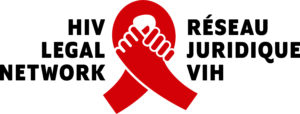The HIV Legal Network (www.hivlegalnetwork.ca) promotes the human rights of people living with and vulnerable to HIV/AIDS, in Canada and internationally, through research and analysis, advocacy and litigation, public education and community mobilization. The Legal Network is Canada’s leading advocacy organization working on the legal and human rights issues raised by HIV/AIDS.
RESOURCES
Update on Bill C-9, An Act to amend the Criminal Code (conditional sentence of imprisonment)
Publication date: 2006The Canadian HIV/AIDS Legal Network is pleased to report that Bill C-9, the Government’s legislation aimed at eliminating conditional sentencing for certain criminal offences, was amended before passing third reading in the House of Commons so that it no longer...
Intellectual Property and Access to HIV/AIDS Treatment — Case Studies
Publication date: 2006Until now, India, Brazil and Thailand have been among the biggest generic ARV producers, both for their own people and for export. This production has been crucial for the supply of affordable treatment in the developing world. It has resulted in competition between...
Not Up to the Challenge of Change: An analysis of the report of the Subcommittee on Solicitation Laws
Publication date: 2007This briefing paper critiques the report of the House of Commons Subcommittee on Solicitation Laws in detail. It also summarizes the Legal Network’s analysis of the criminal law’s impact on sex workers and calls on federal politicians to show real...
Brief to the Toronto Board of Health regarding Supervised Injection Services in Toronto
Publication date: 2013A comment on audemars piguet replica the Toronto Board of Health’s study of supervised injection services, drawing the Board’s attention to louis vuitton replicacertain elements which are particularly relevant from the perspective of public health and...
Opioid Substitution Therapy in Prisons: Reviewing the Evidence
Publication date: 2008A wealth of scientific evidence has shown that methadone maintenance therapy (MMT) is the most effective intervention available for the treatment of opiate dependence. MMT has been associated with reductions in risk behaviour, illicit drug use, criminal behaviour,...
Needle and Syringe Programs and Bleach in Prisons: Reviewing the Evidence
Publication date: 2008A substantial amount of scientific evidence has shown that needle and syringe programs (NSPs) in the community are the most effective intervention available to prevent HIV transmission associated with injecting drug use. As well, NSPs have been associated with...
Mandatory Minimum Sentences for Drug Offences: Why Everyone Loses
Publication date: 2006There has recently been a movement on the part of the newly elected federal government to consider mandatory sentences and stiff penalties for drug offenders. However, scientific evidence indicates that mandatory minimum sentences only worsen the health-related harms...
The Jean Chrétien Pledge to Africa Act and its Impact on Improving Access to HIV/AIDS Treatment in Developing Countries
Publication date: 2008This document assesses some of the measures taken recently to improve access to more affordable ARV therapy in developing countries. It provides a synopsis of the key WTO rules and developments, and of the Canadian law, the concrete benefits of which have yet to be...
Human Rights and Drug Control Policy
Publication date: 2010Increasingly, human rights monitors, mechanisms and NGOs have begun to focus on drug policies and their impact on human rights protections, but this rarely happens in a connected or thematic way. These briefing papers are intended to provide a basic overview of some...
Fixing Canada’s Access to Medicines Regime (CAMR): What You Need to Know About Bill C-398
Publication date: 2012In this document, we identify some of the key claims made by those who oppose CAMR reform and explain why these are incorrect and misleading.

